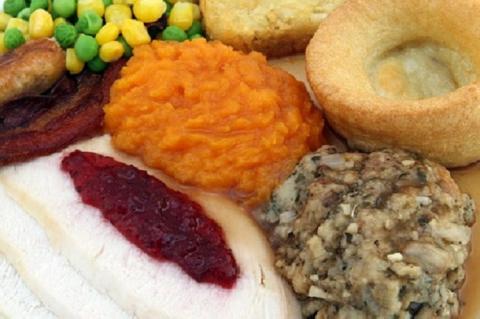Thirteen Tips for Thanksgiving food safety
Easy ways to pass the stuffing without passing on food-borne illnesses
SHARE

For many home cooks, Thanksgiving dinner is the largest meal they’ll prepare all year. Getting it just right, especially the turkey, brings a fair amount of pressure, regardless of the host’s skill level. With all that pressure, it’s easy to lose sight of another important aspect of your Thanksgiving meal: food safety. Food safety might not be as exciting finding the perfect brine for the turkey or trying out a unique new side dish, but it’s vital. When you pass the stuffing, you don’t want to pass along a food-borne illness. These tips will help keep your Thanksgiving meal delicious and safe:
Before cooking the turkey:
- Read labels carefully. Temperature labels show if the bird is fresh or frozen. If you plan to serve a fresh turkey, purchase it no more than two days before Thanksgiving.
- Use two thermometers: a refrigerator thermometer to ensure the turkey is stored at 40 F or slightly below and a food thermometer to make sure the cooked turkey reaches a safe 165 F.
- Thaw the turkey using the microwave, the cold-water method, or the refrigerator. The refrigerator method is USDA-recommended.
When cooking the turkey:
- Wash hands with warm water and soap for 20 seconds before touching any food, to prevent the spread of many types of infection and illness.
- Do not wash the turkey. This only spreads pathogens onto kitchen surfaces. The only way to kill bacteria that causes foodborne illness is to fully cook the turkey.
- Keep raw turkey separated from all other foods at all times.
- Use separate cutting boards, plates, and utensils when handling raw turkey to avoid cross-contamination. Wash items that have touched raw meat with soap and warm water, or place them in a dishwasher.
- Cook the turkey until it reaches 165 F, as measured by a food thermometer. Check the turkey’s temperature by inserting the thermometer in three places: the thickest part of the breast, the innermost part of the thigh and the innermost part of the wing.
When consuming leftover Thanksgiving food:
- Refrigerate leftovers within two hours to prevent bacteria from growing on the food.
- Store leftovers in shallow pans or containers to decrease cooling time. This prevents the food from spending too much time at unsafe temperatures (between 40 F and 140 F).
- Do not store stuffing inside a leftover turkey. Remove the stuffing from the turkey, and refrigerate the stuffing and the meat separately.
- Avoid consuming leftovers left in the refrigerator for longer than three or four days (the Tuesday after Thanksgiving, to be precise). Use the freezer to store leftovers for longer periods of time.
- Keep leftovers in a cooler with ice or frozen gel packs if the food is traveling home with a guest who lives more than two hours away.
Categories